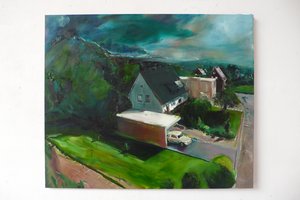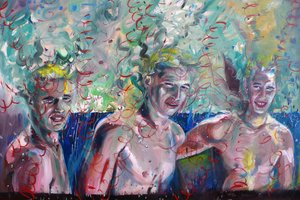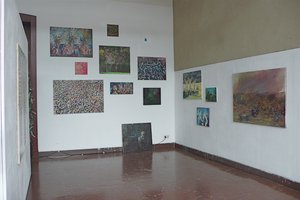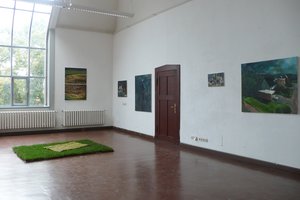The term green incorporates such conepts as nature, landscape, the garden and vegetation. In recent times, however, it has become an extremely topical subject of debate, one whose ramifications go far beyond what is generally associated with these concepts. It is life itself which is at stake here. In the summer semester 2009, the multifacted topic of The Garden has been the focus of much interest.
The Garden is part of the Green Shuttle series, an international, inter-disciplinary green forum. The development and presentation of individual works of art will form the central part of the project. In addition to this, contacts were made with guest artists and academics, who were invited to hold lectures and supervise workshops. Further forums aimed at stimulaing inter-disciplinary exchange as well as indoor and outdoor exhibitions and presentations.
The garden represents an ideal framework for dealing with life. Since the garden first existed, nature and culture have always come together here, holding up a mirror to society. Traditionally, however, gardens and gardening have tended not to be associated with art, as they have almost invariably been purpose-built, be it for the purposes of food production, prestige or general edification.
It was not until the dawn of Modernism that the garden was discovered as a means of purely artistic expression by artists such as Isamo Noguchi in Japan and Herbert Bayer of the Bauhaus. In the 1970s others, including Hans Haacke, Peter Hutchinson, Robert Smithson and Alan Sonfist, turned their attention to working with living plants. Their remarkable output made great use of vegetation as an artistic medium, despite its being so difficult to control. It tended, however, to languish in the shade of the gigantic works of the Land Art movement and as such received scant recognition. It was only really in the 1990s, when the concept of what constituted an artistic field of work began to expand, that art which interacted with vegetation and gardening began to assert itself. Working with or within landscape opens up untold opportunities for artistic statement and expression, and the related fields of horticulture, biology and botany have since been incorporated into this process. Scientific methodology has also been used as part of the repertoire of artistic endeavour.
This project provided a framework for experimentation and for the development of individual art works which dealt with the subject of the garden in its broadest sense. Participants could choose from a wide variety of artistic forms and media: classical media such as painting, drawing and photography, or interventions and indoor and outdoor plantations. Work could take place in both real and virtual spaces; this could entail working on sites in and around Weimar identified by the project leaders, or else the work may be web-based. As well as developing their practical skills, participants were also expected to show an interest in further research and to consider the theoretical aspects of the subject.
Rundgang und Gespräch in den KünstlerGärten Weimar
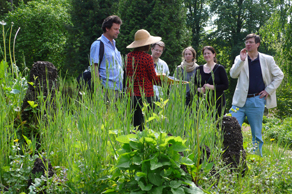

Rundgang und Gespräch mit den Philosophen Prof. Dr. Peter Kunzmann, Sabine Odparlik und weiteren MitarbeiterInnen der Forschungsgruppe "Würde in der Gentechnologie" (Friedrich-Schiller-Universität Jena) in den KünstlerGärten Weimar am 14. Mai 2009
Erneuerung und Bepflanzung der Arbeit "Circle Mound" von Samm Kunce
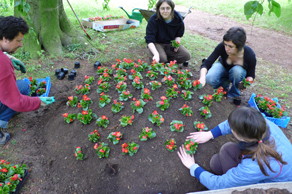

Erneuerung und Bepflanzung der Arbeit "Circle Mound" von Samm Kunce in den KünstlerGärten Weimar am 14. Mai 2009
Erneuerung der Arbeit "Liegewiese - Betreten verboten" von Daniel Spoerri
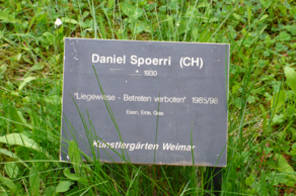
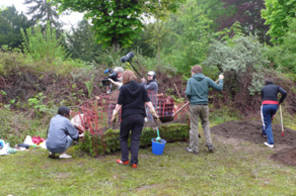
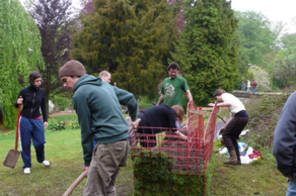
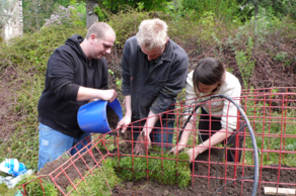
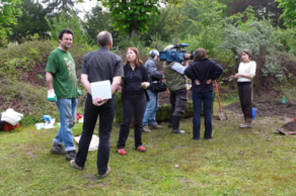
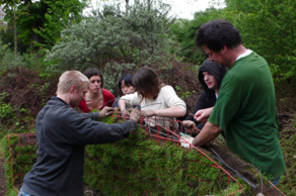
Erneuerung der Arbeit "Liegewiese - Betreten verboten" von Daniel Spoerri am 30 April 2009
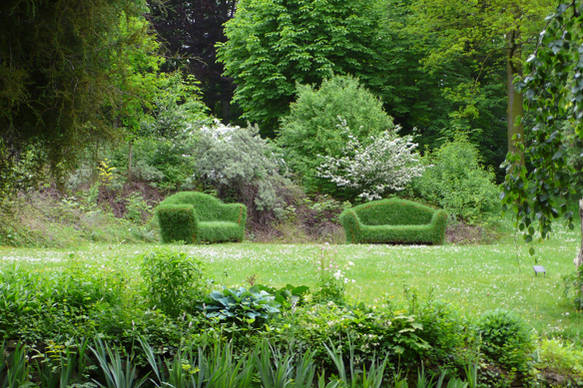
Projekt-Plenum
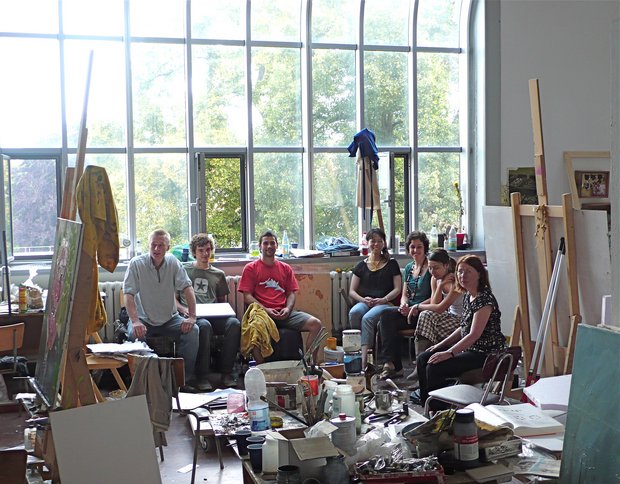
Ausstellung zum Rundgang 2009
